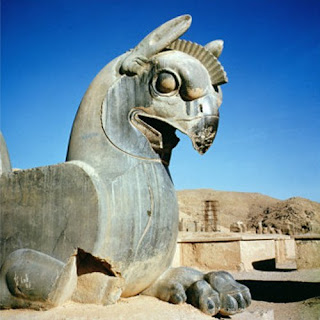In this Project, we explore different surfaces, in a bid to better understand our subject. Surface exploration has a long provenance, with painters such as Rembrandt using black chalk & charcoal to do his elephant drawings in 1637, Degas who worked with brown paper, pastels & oils in the 1880's, & more recently Francis Bacon using the reverse side of his expensive canvases. I reckon Banksy (contemporary graffitti artist) fits in here too, working as he does on buildings, rolled shutters & street surfaces, usually with spray paints, a medium not usually associated with 'artists'.
'A wall has always been the best place to publish your work' (Banksy).
 |
Rembrandt: Elephant (charcoal)
|
Degas, dancer (pastels on brown paper)
The finished A1 sheet, showing 9 different surfaces & media.
 |
To begin the process, the paper was folded in such a way that 9 squares were created. Then the crab outline was drawn,
& the sheet cut up along the lines created by folding, to produce 9 individual pieces. Each piece had a bit of the outline on it, which allowed a free exploration of different surfaces, and also different drawing/painting mediums.
We were encouraged to use black, white & gray only; media included paint, chalk, charcoal, biro, black pen etc. It proved an interesting exercise..... the importance of texture affinity became apparent. |
Here I show you my 9 approaches up close:
 |
Clingfilm, drawn on with wide black pentone pen. The wavy lines are reminiscent of
the sea, where the crab originates; however as a medium I find the clingfilm too reflective & shiny. Its
lovely to draw on with the black pentone though, very free & easy. |
 |
Here I have used a hard shiny paper over a tissue paper
(on which I had already made some surface marks using white paint)
I think it is a reasonably sympathetic treatment, given the hard nature of a crab shell,
but I feel its too shiny & overly reflective |
 |
A fuzzy silver coloured, slightly see through paper is drawn on here, with a mixture of black pen & white paint
Quite a subtle medium; I think the grain of the paper works well. |
 |
Brown paper & chalky pastels, a la Degas, also black charcoal.
Quite an interesting surface that has some affinity with the subject |
 |
Tissue paper. Marks using charcoal & white wax crayon
Good affinity. |
 |
Birch bark, with waxy black crayon. A very fragile medium,
but I think it lends itself reasonably well to the subject in question. |
 |
Here I used orange paint on linen. I then did some surface sewing, using
embroidery thread. I forgot that we were to use a restricted colour palette....
Reasonable affinity, though a lot of stitching needed to bring out the contours & surface details. |
 |
Leather surface. The surface outside the object was initially covered in green tissue paper & drawn on with black
swirls, using a black pen. I found this too distracting, so decided to cover it with some of the white see through plastic textured paper; both surfaces were then daubed with white paint using my fingers. I decided to use a black marker pen to delineate the outline more clearly. This was an interesting experiment, if not overly satisfactory. |
 |
In which I chose wax crayon on silver paper, with some shading using light charcoal.
I find it satisfactory in terms of affinity with the subject. There is a little bit of reflected light,
which I have tried to convey. |














Comments
Post a Comment